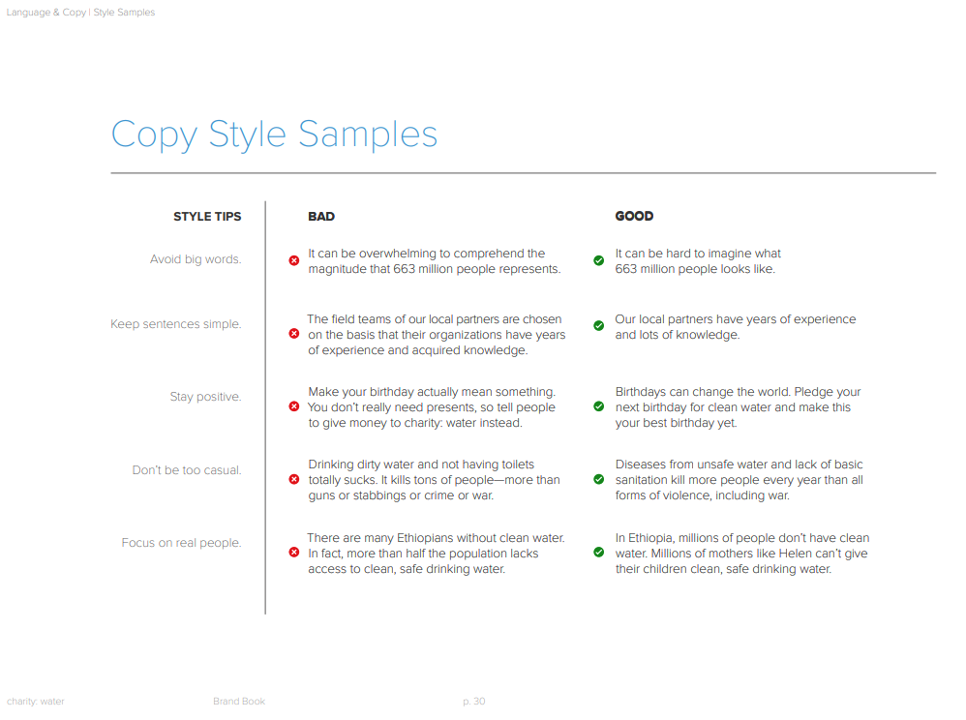
Style guides are essential tools for nonprofit communicators. They convey the “rules” for everything from whether you use the serial or Oxford comma, to how you punctuate abbreviations like a.m. and p.m. to what words you use to describe certain groups of people (seniors, elderly, older people, etc.) and more. And that’s just on the language side. Style guides also cover logo use, colors, fonts, etc.
All of that is easy enough.
Where nonprofit communicators often need the most help is in finding ways to convey writing style, tone, and voice in their style guides.
Here are a few ideas to get you started and all of these can work together in various combinations.
Words from Your Branding or Values Exercises
If you have recently participated in any mission/values conversations or branding or re-branding exercises, you very likely worked with a list of adjectives that described your organization and that did not. You can use these words as a starting point. (“Our voice is bold but never showy.”)
Reading Comprehension Level
If you are struggling to edit language that seems much too complicated for your target audience, using a reading comprehension tool can be a lifesaver. Instead of you and your writers arguing over each and every long sentence or all of the jargon, ask the writer to use a tool that assigns a grade level to the copy. (“Aim for an 8th-grade reading level.”)
There are different tools for this task, many already built into your favorite word processors or review tools. Find one that you like best and ask everyone to use the same tool for consistency and a common ranking scale (e.g. Flesch Kincaid Reading Ease, Flesch Kincaid Grade Level, Gunning Fog Score, SMOG Index, etc.).
Articulating the Vibe
You can also expand on your brand or values words by elaborating on what those words mean in the content of communications language choices. (“While we may be leaders, avoid the nuance of ‘being the best’ or disparaging others.”) Take each of your brand words and then explain what that means you should do and also what you shouldn’t do as a content creator.
Give Explicit Examples – Good/Bad, Do/Don’t
This is what think is actually most helpful to others. Give them explicit examples.
Here’s an example from charity: water . . .

These approaches combined with ongoing training and coaching will get your writers closer to your desired voice, style, and tone over time. It’s a process! Prepare for it to take awhile, but use these tips to support you.






